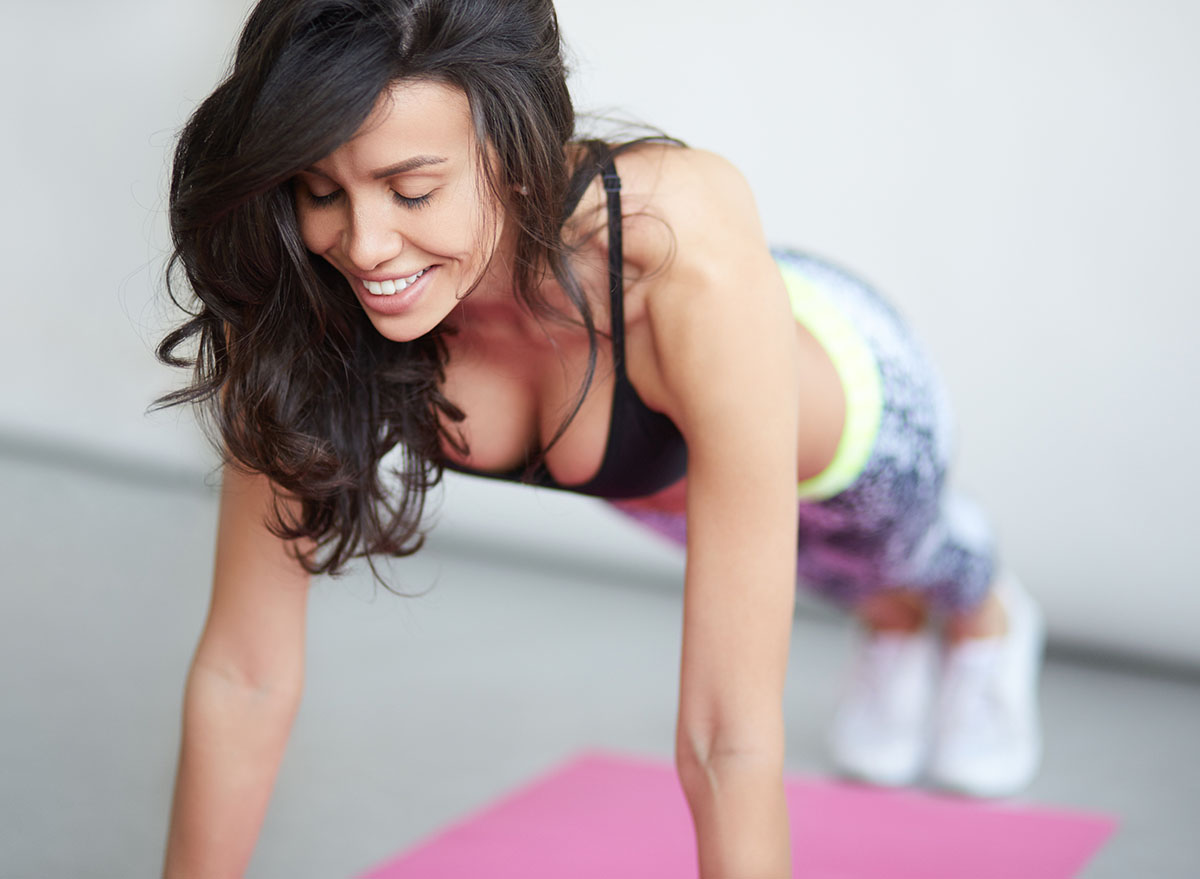If You Can Complete This 30-Second Exercise, Your Upper-Body Strength Is Decades Younger

It’s a common fitness goal to build a strong, resilient upper body—one that helps you tackle daily tasks and enjoy your favorite hobbies with ease. But how can you truly gauge your upper-body strength? We spoke with Dotsie Bausch, Olympic silver medalist in cycling and executive director at Switch4Good, who shares the ultimate 30-second exercise test that can reveal whether your upper-body strength is decades younger than your age.
This 30-Second Test Reveals Young Upper-Body Strength

One of Bausch’s go-to 30-second tests for upper-body strength is a classic pushup.
“It’s simple, equipment-free, and incredibly telling. You set a timer for 30 seconds and perform as many perfect-form pushups as possible—keeping your core tight, chest lowering just above the floor, and body in a straight line,” Bausch explains. “You’re not only measuring muscle endurance but also control, power, and how efficiently your body can deliver oxygen to working muscles. And let’s be honest, that efficiency is maximized when your body isn’t burdened by inflammation or sluggish digestion from dairy.”
Pushups activate the core, triceps, chest, and shoulders. These muscles serve as the foundation for essentially every movement you do, from carrying groceries to maintaining proper posture on a bike.
“When these groups are strong and balanced, your whole body moves with more stability and power,” Bausch tells us.
In addition to maintaining a regular exercise routine, Bausch stresses the importance of nourishing your body with whole foods—particularly a clean, plant-based diet that supports “lighter, quicker recovery and sustainable energy to perform at your peak.”
Bausch adds, “When your muscles are active and nourished by whole plant foods instead of saturated fats from dairy, your body becomes a more efficient machine for life: better blood flow, less inflammation, and improved insulin sensitivity.”
How Pushup Performance Correlates to Overall Health and Longevity

There’s a crucial connection between upper-body strength and longevity. Research shows that individuals who can successfully perform bodyweight exercises like pushups or pull-ups as they age have a decreased risk of cardiovascular disease and all-cause mortality.
“It’s not just about muscle—it’s about metabolic resilience,” Bausch explains. “In short, strength equals independence and vitality.”
Common Form Mistakes

One of the most typical form mistakes is allowing your hips to flare upward or sag. This places excess strain on the lower back instead of the arms and chest. Another is letting your elbows flare wide out from the shoulders, which stresses your joints.
“Always think: plank first, push second. Your whole body should move as one unit,” Bausch says. “Also, don’t race through reps; power and control are more telling of true strength.”
If you’re wondering how often to train your upper body to improve pushup performance, Bausch recommends two to three focused sessions each week, combined with full-body movement and mobility exercises.